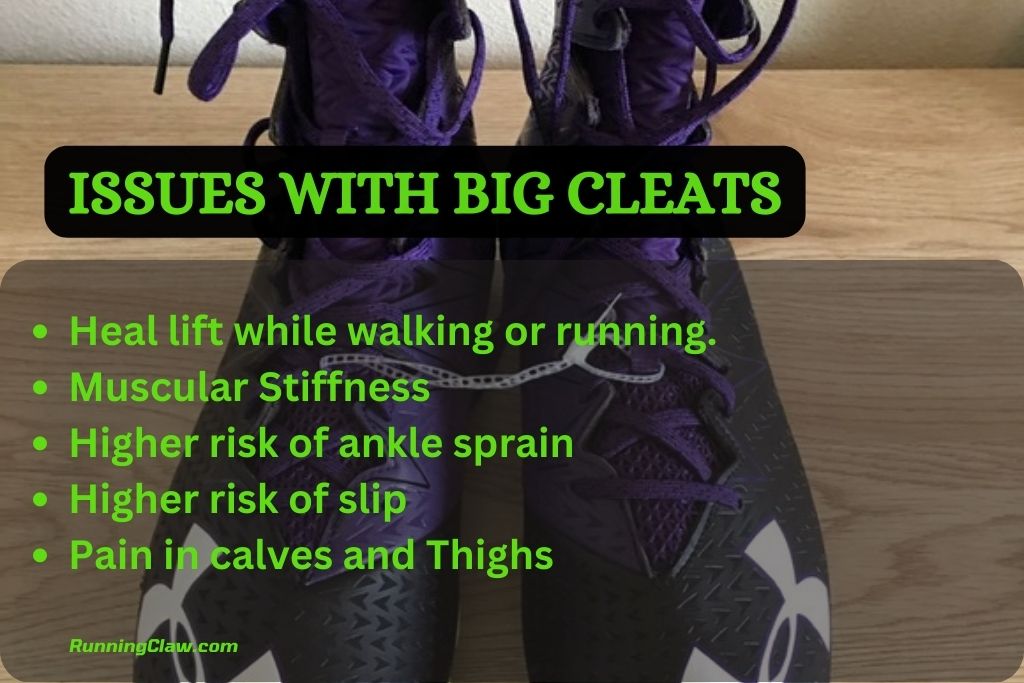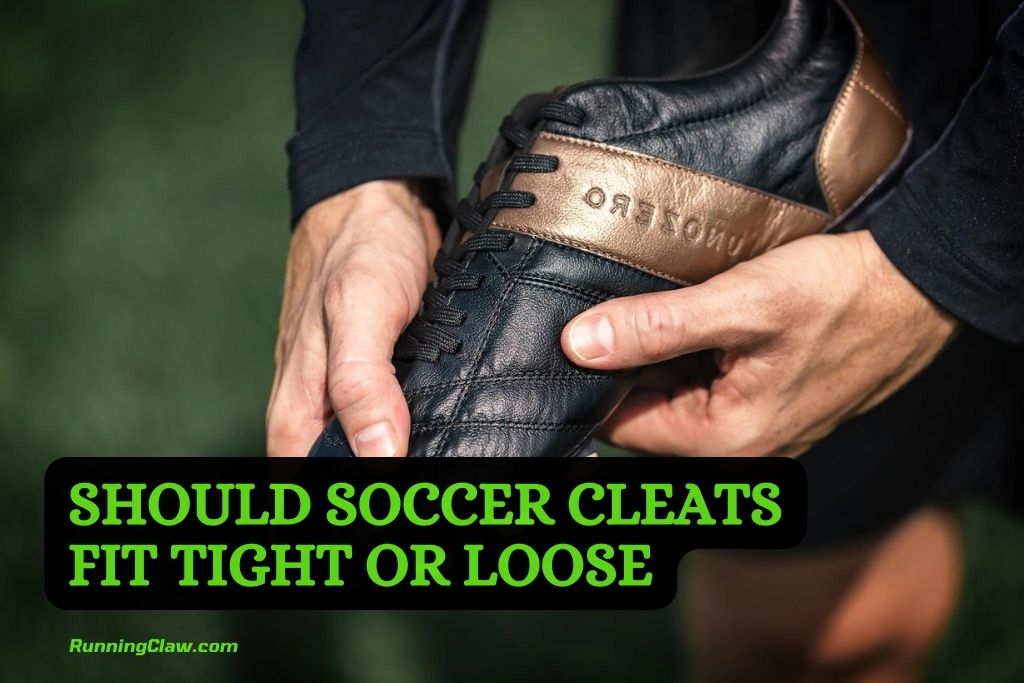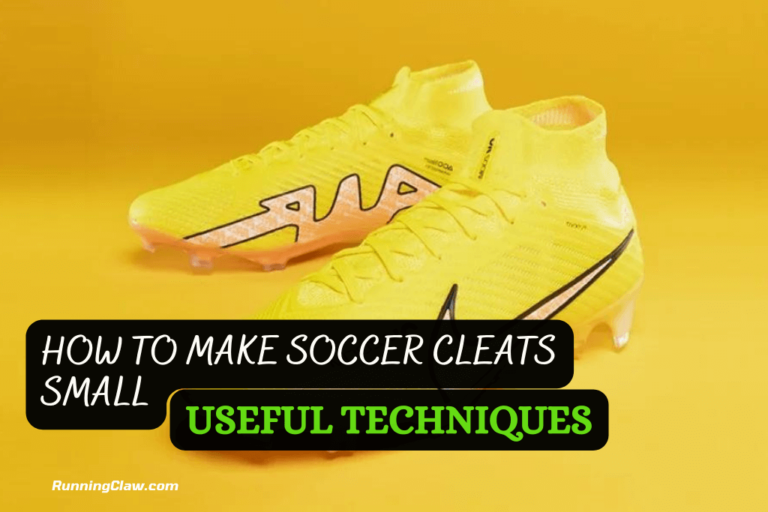Many children and adults find soccer cleats excessively large. Finding the ideal soccer shoe size can be challenging; as a result, it takes several trips to various stores to achieve the appropriate fit.
Are you also facing the same problem?
Are your Cleats too big for your feet?
Do your feet doesn’t fit in your cleats?
No worries. You are at the right place. I will help you to get rid of this problem.
Issues with Big cleats:

These are some issues that you may face while having big soccer cleats.
- Heal lift while walking or running.
- Muscular Stiffness
- Higher risk of ankle sprain
- Higher risk of slip
- Pain in calves and Thighs
More oversized cleats can cause the above-discussed problems, ultimately leading to serious injury. But right cleats can help in running fast.
Why do you need to make Soccer Cleats smaller?

Before discussing how to mend massive cleats, it’s necessary to explain why you should never play Soccer with oversized cleats as a player.
It’s crucial to have the proper footwear on while playing Soccer. Soccer cleats that are larger than your foot size have a lot of drawbacks.
- The area around the feet is larger in oversized cleats. The feet in the cleat move about as a result. The extra spaces cause the player’s feet to slip as they sprint around the pitch.
- When wearing the more oversized cleats, there is a chance that they might break because of the factor that your feet slip in the extra space of the more giant or oversized cleats.
- Loose cleats make it harder to control the ball and more challenging to hit accurately. When the feet move around in the cleats, getting a good grip on the ball takes effort. Even when you get a chance to shoot, it’s hard to do because your cleats are too big.
How to make Soccer cleats Smaller?

Wearing cleats bigger than your exact foot size can lead to different problems like neuromas, Achilles tendonitis, and arch pain.
If you wear oversized cleats for a long time, it can hurt your whole body, including your neck, back, and knees. The proper soccer cleats should support your ankles and keep your feet from rubbing against the boots anywhere.
Here are some steps to make your cleats smaller or more fit.
Use Padded Insole:
Insoles help to absorb vibrations that come from the bottom of the feet. More specialized insoles help the body stand up straighter. Also, they can be used to fill up soccer cleats and make them fit better.
Sometimes, you may need to double the insoles to fill any extra space in the soccer cleat and get a good fit.
Spray For Protection
Leather and synthetic materials are moisture-sensitive; you should protect them to prevent shrinkage.
You can use a spray made for one of these materials, but it’s best to handle the shoe with clean hands because some sprays contain alcohol, which will draw out any oils from your skin.
Allow Them To Dry:
Remember that you want to waterproof your boot sparingly.
Give the leather at least 24 hours before removing the surplus liquid with a damp towel or other household items like clothespins attached by the string because the leather will absorb some moisture and become less breathable.
For optimal results, let this dry overnight after applying an even coat to all areas without going overboard because doing so could result in clumps.
Submerge In Warm Water:
Soak your cleats in warm water for 5-10 minutes. Remember, do not soak them in extra warm or super-hot water because it will cause damage to your new cleats.
Additionally, you can soak your cleats while wearing them. As your feet contract, this will help the boot to contract around them.
Dry Them:
Before wearing your shoes, you must give them enough time to dry out completely. After drying off with a towel, place the boots outside in the sun for about an hour to let the moisture drain.
Should Soccer Cleats Fit Tight or Loose?

Your preference will determine how tight or loose your soccer cleats should be; there is no right or wrong answer. While some athletes like a snug fit, others appreciate a little more room. In the end, you should follow your gut and do what seems right.
Tighter or smaller cleats, which offer a better hold on the ball than loose ones, can aid in stability when cutting fast from side to side.
If you don’t have long socks or shin protectors, loose or oversized cleats will make you fall since they don’t have adequate traction on the surface.
Wrap Up:
If you’ve ever purchased cleats, you know that sizes can vary significantly between companies. Additionally, if you’re unlucky, the desired size may only sometimes be offered in the desired style. Therefore, what should you do if you end up with a set of cleats that are too large?
You can follow the above steps to make your cleats smaller and gradually fit for your feet.
You may also like:


